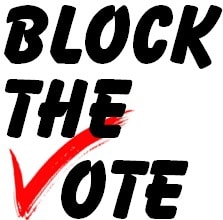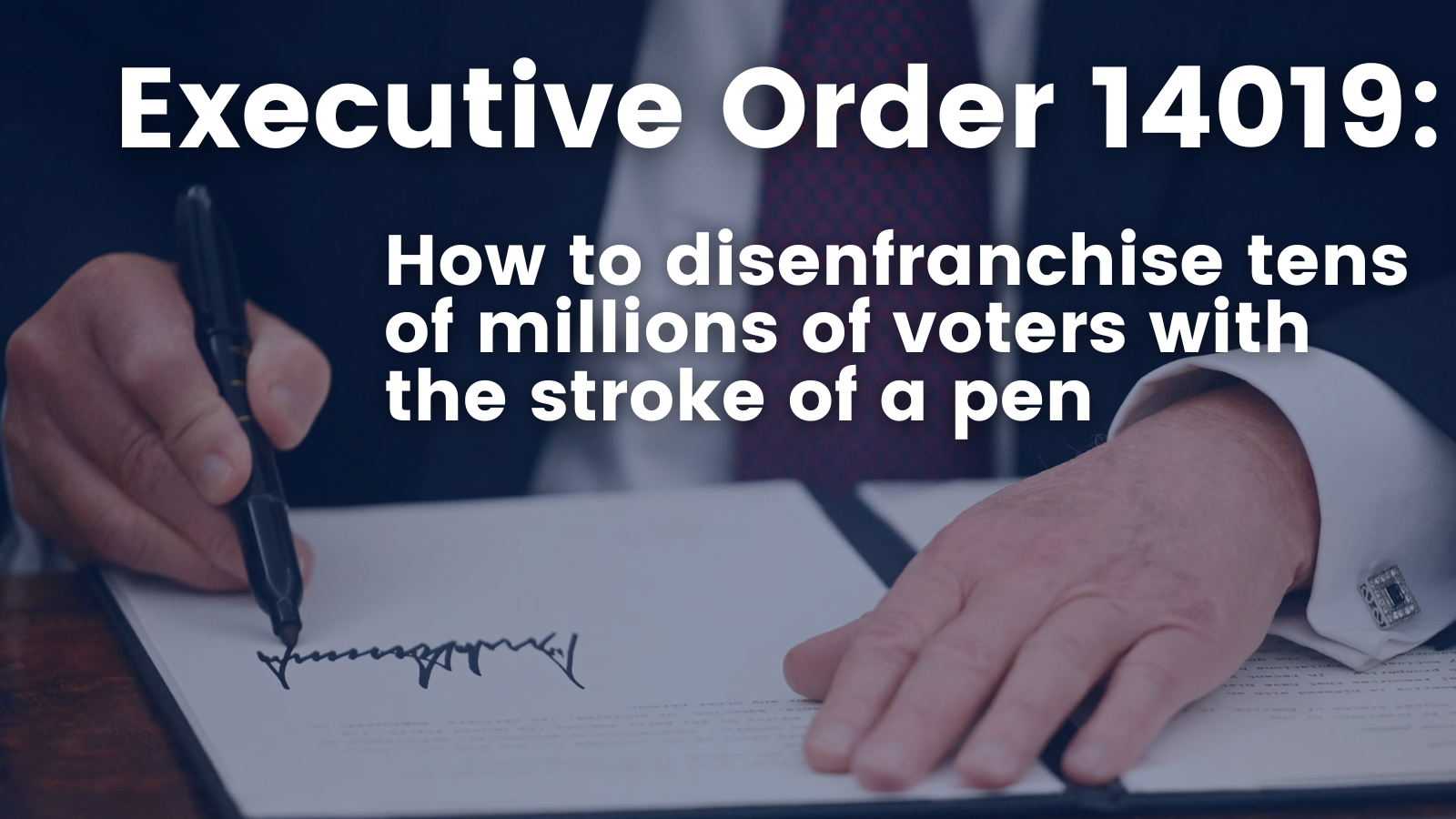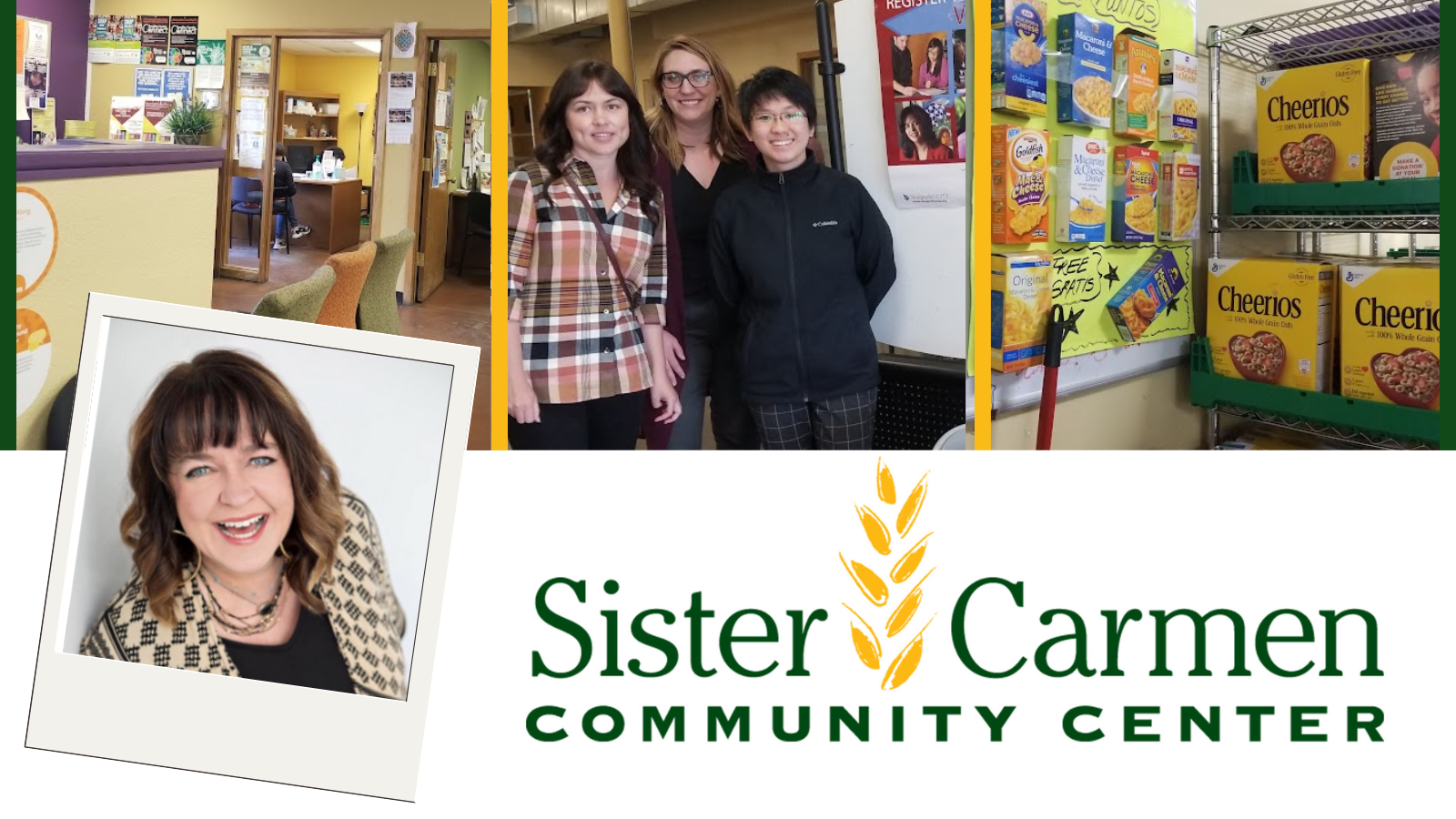The Bias of At-Large Elections: How it Works
“The Oldest Trick in the Book”
 If you want to rig a local election, there’s an easier way than stuffing a ballot box, gerrymandering a district, or amassing a campaign war chest to scare off challengers. Have your city or county adopt winner-take-all “At-Large” voting, where, instead of using districts, all or most council or school committee candidates must run “at large, city or countywide.
If you want to rig a local election, there’s an easier way than stuffing a ballot box, gerrymandering a district, or amassing a campaign war chest to scare off challengers. Have your city or county adopt winner-take-all “At-Large” voting, where, instead of using districts, all or most council or school committee candidates must run “at large, city or countywide.
At-Large block voting—also known as the “plurality-At-Large voting method”[1]—has been called the oldest trick in the book.[2] Supreme Court Justice Ginsberg cited this method, along racial gerrymandering, as a preeminent second-generation way to deny equal opportunity for minority voters and candidates.
Congress has banned At-Large voting for all federal elections. It’s been discarded by most states. No voting method has been subject to more litigation for its discriminatory impact on local elections. Yet, while the covers are off the discriminatory impact and intent of At-Large voting, it persists in hundreds of local jurisdictions.
History
With no direction from the U.S. Constitution on voting systems, in 1788 the first states elected their members of Congress At-Large, or statewide. Most soon saw how this left significant regions of their states without local representation and so they started using regionally based districts. By 1842, 6 of the 28 states—the ones typically dominated by one party—clung to the At-Large voting method to control all the seats. That year, Congress banned this voting method, a ban that was several times canceled and then reinstated until the passage of the 1965 Voting Rights Act, when Congress made the ban permanent.[3] Most states, by law or in practice, followed suit eliminating it for use in all state elections.[4] At-Large voting still held a firm grip on local elections, however.
After the Civil War, local jurisdictions across the South adopted At-Large elections to ensure white-only governments. Northern cities did the same to advantage ethnic groups or parties, such as Lowell, Massachusetts, in the 1950s. In 1957, Lowell’s majority, largely Irish, voting block changed its proportional voting method to plurality-At-Large for municipal elections, stating at the time that, “a ‘majority rule’ . . . would limit ‘minority rule’ of ethnic and national groups like the French, Greeks, Irish, Poles, Jews, Syrians, Armenians, and Lithuanians.”[5]
What Are At-Large Elections
In At-large elections candidates run jurisdiction wide – citywide, countywide, etc. – not in single winner districts. At-Large elections are mostly multi-seat contests. All or some of the seats are contested at-large. Voters elect several candidates at once to the same office like a nine person city council or seven person school committee. All At-Large elections where all seats are contested jurisdiction wide are the most common. It is also the most problematic with the potential for one voting block to win them all and not just their proportionate share.
At-Large Voting’s Monopoly Math
Under the standard plurality rules used in multi-seat elections, voters are allotted as many votes as there are seats. For example, nine votes to elect a city council of nine members. Voters are not required to use all their votes. But they may only give one vote to each the candidates they do vote for.
Using plurality rules, fifty percent of the voters can, if they mostly support the same candidates, win all the seats. In fact, the majority block doesn’t even have to compose 50 percent of the electorate. All that’s needed is for one large neighborhood or voting block to vote cohesively enough to build up an insurmountable lead over the rest of the field. Their favored candidates will pick up plenty of other votes as a secondary choice of voters who’d really prefer other candidates. As a result, the majority of voters can see all their favored candidates lose election after election. In an At-Large, jurisdiction-wide field, it’s easier than one might think to have the vote totals of the candidates preferred by a city’s largest and most cohesive voting block outpace all others and claim all the seats. Sixty years after Lowell switched to At-Large voting, the school committee remains all white and almost all the city council members come from one neighborhood—even as more than half the city is now “minority,” and Latino, Asian, and other students of color make up 75 percent of the school population.
See here for two examples of using At-Large voting method in non-election settings. Choosing Music for a Prom or a Setting Organizational Goals at Meeting
Common Questions
How often does a single voting block vote cohesively for all the same candidates?
Fairly often. Expert analysis of voting pattern preferences in voting rights cases frequently show high vote cohesion by the dominant voting block. In the Lowell example, white voters in a few neighborhoods cohesively cast their highest number of votes for the 9 city council candidates who won in a field of 18 candidates. They ranked the two Asian American candidates 17th and 18th. By contrast the two leading candidates of color were highest or among the top three choices of a third of the city’s more diverse precincts.
Isn’t it about voter turnout?
No. If it were just voter turnout, the federal government may not have banned At-Large voting from federal elections, states would not have rejected it, and the courts would not have declared hundreds of local At-Large systems illegal. First, the majority voting block starts with a large advantage in eligible voters and their votes alone can determine all nine winners. Second, minority voters hoping to elect one or two candidates still have nine votes. Beyond their top choices, they’ll often end up voting for the majority block candidates to use more of their allotted votes, pushing up the total votes cast for the majority candidates. Over time this results in a lower voter turnout in these neighborhoods, a byproduct of a stacked system where voters see their favored candidates lose election after election.
What about voters “bullet” voting for their most favored candidate?
For smaller voting blocks “bullet voting,” using only one of their nine votes and casting it for their top choice, can give that candidate a better chance, but this rarely succeeds. But more important to equal representation, why should some voters be forced to limit themselves to a fraction of their voting power while the majority block finds strength in using all of theirs?
Wouldn’t using a proportional representation solve the problem?
Some jurisdictions use a proportional voting method for their multi-winner at-large elections such as Limited Voting, Cumulative Voting or Ranked Choice (preference) voting. Ranked Choice Voting, while the fairest, is easier to use in single winner elections like mayor, governor or legislative seats. The other two are subject to vote splitting. Outside of a party driven system that simplify and narrow the choices for voters and reduce costs for candidates campaigning in large jurisdictions, they have inherent challenges that favor candidates with more time and money and more experienced and educated voters that only increase with population growth.
The Added Challenge of Running Citywide
At-Large voting could be seen as workable in the small-town scale of the 19th century. Today, beyond the inherent bias of At-Large block voting, the challenge of running across an entire city or county is compounded by the following:
- The high cost of running—staff, communications, mail (still needed), database management, and media;
- The burden of fund-raising to run citywide;
- The need to contact voters and gain name recognition in a jurisdiction that can often be larger than a state senate or even congressional district; and
- Added time away from work and family to campaign and raise funds.
What’s more, the focus of jurisdiction-wide campaigns inevitably requires spending time and resources in neighborhoods that already hold the greatest voting power, thereby reinforcing a cycle of higher turnout there and lower turnout in the places where it’s already low. Voters outside the perennial winner neighborhoods struggle to come up with a slate of choices from a long list of names they’ve never met and have little time to research.
The Advantage of Districts
By contrast, neighborhood-based election districts make it easier for both voters and candidates. Voters are more likely to meet the candidates in person and have access after the election to a neighborhood-based representative. For candidates, the campaigns cost less, more time is spent closer to home, and there is more chance to meet people they seek to represent. Local election districts also do a better job of representing those not yet eligible to vote who also have easier access to a local rep and, as residents, get counted for the purposes of how districts are created.
A drawback is that district lines can be gerrymandered to favor one group. But on balance districts have provided not only more opportunity for underrepresented groups but also, because they’re neighborhood based, better access to local representatives post-election. District systems do benefit from having some At-Large seats to ensure a jurisdiction-wide perspective.
Enter the Voting Rights Act
The 1965 Voting Rights Act (VRA) advanced the constitutional principle of equal opportunity to register and participate in elections. In 1982, when the VRA was extended by Congress, its amendments gave teeth and standards for legal challenges to At-Large voting methods. Soon after, the Supreme Court (Thornburg v. Gingles) set a three-prong test for a legal challenge to At-Large systems, the most important prong being the ability of minorities to demonstrate that the majority group votes with sufficient cohesion to defeat their preferred candidates and deny them and others an equal opportunity to elect candidates of their choice.
Hundreds of cases followed. Almost all jurisdictions that were taken to court or threatened with legal action replaced the At-Large voting system. Most jurisdictions did so by introducing district elections. In some cases the jurisdiction retained a few At-Large seats. A handful of others opted to use one of three semi-proportional methods common in the United States—ranked choice voting, cumulative voting, or limited voting. (The relative advantages of districts or a voting method designed for At-Large or multi-winner elections will be discussed in a subsequent blog post.) One action we have not seen is a jurisdiction that changed to go back to At-Large voting. Pasadena, Texas, tried this in 2015 and received a stinging rebuke by the Federal court for its transparent attempt to limit the voting power of an increasing Latino population.
Conclusion
At-Large voting systems may be appropriate for multi-winner elections in small jurisdictions where everyone knows the candidates and one segment of the population can’t be routinely outvoted. This is not true in larger jurisdictions that are more susceptible to the discriminatory effects of block voting—add to this the problems for candidates facing the high costs of running citywide and for voters of deciding among a long list of candidates on the ballot, most of whom they don’t know or have never met. With higher stakes for policy outcomes and the need to represent and engage all neighborhoods, At-Large voting results in under representation for the majority of neighborhoods.
In spite of the bans, the disuse, and lawsuits, At-Large systems remain in many local jurisdictions. Incumbents elected At-Large are rarely the ones to call for a more democratic system. The challenge is most often led by the affected voters themselves with the help of civic groups, legal partners, or government willing to enforce equal opportunity voting rights found in the VRA and the Constitution itself. In the process, the pillars of democratic participation are uplifted and reinforced, and a more effective system for long-term voter engagement emerges.
[1] The top finishers need only a plurality, not a majority of votes cast, to win. The voter may only use one of his or her allotted votes for each candidate. Unlike semi-proportional methods like ranked choice or cumulative voting, there is no option the voter can show a preference among the list of candidates they vote for.
[2] Chris Hayes, “The most important election you haven’t heard of,” NBC News, November 8, 2013.
[3] Tory Mast, Fair Vote, The History of Single Member Districts, 1994, http://archive.fairvote.org/?page=526
[4] Fair Vote, http://www.fairvote.org/.
[5] William C. Geary, Political Advertisement, “An Open Letter to the Voters of the City of Lowell,” Lowell Sunday Sun (Nov. 3, 1957). Quoted in complaint filed in lawsuit challenging At-Large voting in Lowell, Massachusetts, Chanmony Huot, et al v. City of Lowell Massachusetts, et al), http://lawyerscom.org/wp-content/uploads/2017/05/Huot_v_Lowell_Complaint_05-18-17_As_Filed.pdf, page 28.




